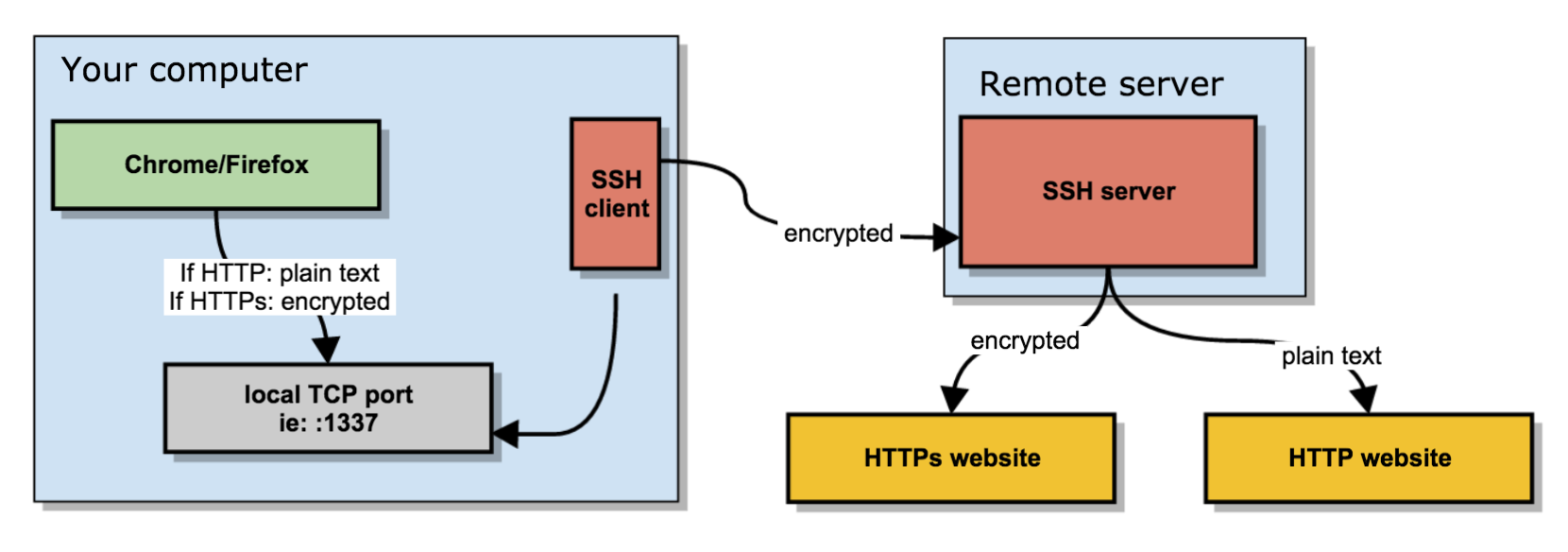

And then, it will be sent from a random port on SSH_remote_host_IP to port 443 on Other than browser The HTTPS request will be relayed from localhost:12345 through the SSH tunnel, reaching your remote host. Instead of communicating with directly, we asked the browser to send HTTPS from the random port on your local machine assigned by your browser to port 12345 on localhost, which is the SOCKS server you just created by the ssh command. However, what we did here is creating a SOCKS Proxy. Usually, when we use a browser to open, it will create a TCP socket pair connecting a random port on your local machine to port 443(for HTTPS) on Then, the browser sends the HTTPS request via this socket pair. In addition to the build-in proxy setting in Firefox, there is a convenient Firefox extension - FoxyProxy, which allows you to turn on/off and switch between different proxies very quickly. The setting is in the Preference > Network Setting > Settings… The next step is setting up your browser’s proxy configuration. If you want to stop it, just press - Firefox via SOCKS Proxy Currently the SOCKS4 and SOCKS5 protocols are supported, and ssh will act as a SOCKS server. This works by allocating a socket to listen to the port on the local side, optionally Whenever a connection is made to this port, the connection is forwarded over the secure channel, and the application protocol is then used to determine where to connect to from the remote machine. $ ssh -NTCD 12345 SSH_remote_host_IP = -N Do not execute a remote command -T Disable pseudo-terminal allocation -C Requests compression of all data -D Specifies a local "dynamic" application-level port forwarding. To solve the problem, we can execute the following command, which creates a SOCKS server listing on port 12345 of your localhost. Is there any simple alternative solution to VPN? The answer is YES if you can SSH to a server running with a university’s IP address, e.g., a workstation running in your laboratory. For instance, some VPN requires special client software, which may not support OS like Linux.

However, it is not always possible to use VPN provided by your school.
#Ssh proxy socks download
If you are working at home, it is well-known that you may connect to the university’s VPN such that your IP address will be disguised as a campus’s IP address that allows you to download the paper paid by your university.

In that case, you have to connect to the journal’s website from a computer with an IP address that belongs to your university. For example, suppose you want to download a paper published in a journal purchased by your university. Some resources on the internet might be only accessible from clients with particular IP addresses.


 0 kommentar(er)
0 kommentar(er)
